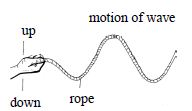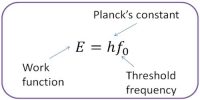There are two kinds of wave:
- Transverse wave
- Longitudinal wave
Transverse wave: A wave will be created in the rope as in the figure (1) Observe that the movement or the vibration of the hand is from left to right or from top to bottom but the motion of wave is horizontal. Here the direction of vibration of the particles is perpendicular to the direction of propagation of wave. This very wave is a transverse wave. So we can say that the wave which moves perpendicularly to the direction of vibration of the particles is called a transverse wave. The water wave is an example of a transverse wave.

Longitudinal wave: A spring is set as in the figure (2) Now let’s move our hand forward and backward by holding the free end of the spring. When we move the hand forward a flow of contraction will be created in the spring. Again if we move the hand backward, a. flow of rarefaction will be created in the spring. The flow of contraction and rarefaction continues to move forward. In this case, the movement of the hand and the wave moves in the same direction. That means the direction of vibration of the spring and the motion of wave are parallel to each other. So we can say that the wave that travels in a direction parallel to the direction of vibration of the particles of the medium is known as the longitudinal wave. The sound wave in the air medium is an example of the longitudinal wave.

The highest and the lowest point of a transverse wave are called wave crest and wave trough. The similar quantities in the longitudinal wave are contraction and rarefaction.








